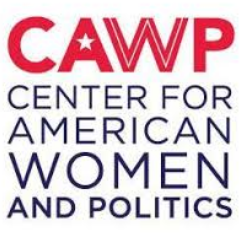Rutgers University Debuts New Database of Women Elected Officials
Posted on Jul 06, 2020 | Comments 0
 The Center for American Women and Politics (CAWP), a unit of the Eagleton Institute of Politics at Rutgers University, launched the new online CAWP Women Elected Officials Database, a first-of-its-kind tool for exploring and analyzing women’s current and historical representation in the U.S. political system. The CAWP Women Elected Officials Database includes every woman officeholder in U.S. history at the federal, statewide elected executive, and state legislative levels.
The Center for American Women and Politics (CAWP), a unit of the Eagleton Institute of Politics at Rutgers University, launched the new online CAWP Women Elected Officials Database, a first-of-its-kind tool for exploring and analyzing women’s current and historical representation in the U.S. political system. The CAWP Women Elected Officials Database includes every woman officeholder in U.S. history at the federal, statewide elected executive, and state legislative levels.
The CAWP Women Elected Officials Database contains entries for more than eleven thousand women officeholders dating back to 1893 when the first woman was elected to statewide office. Its features include:
- Detailed information on women officeholders nationwide, including their officeholding history, party identification, and, when available, information about their race and ethnicity;
- Searchable data by year(s), position, level of office, state, party, and officeholder race and ethnicity; and
- Shareable and downloadable search results, with options to save searches for future reference, export data in multiple formats, and generate summary statistics and data visualizations.
Searches of the database can produce some interesting statistics such as:
- 65 women served in state legislatures before the 19th Amendment giving women the right to vote was ratified.
- 359 women have served as U.S. Representatives and/or U.S. Senators to date, including 243 Democratic women and 116 Republican women.
- The 101 women currently serving as U.S. Representatives represent nearly one-third of all of the women who have ever been U.S. Representatives.
 “Providing a public online database represents the fulfillment of a long-held ambition of the Center for American Women and Politics,” said CAWP Director Debbie Walsh. “Open availability of these data helps all of us understand more thoroughly women’s role in our country’s political history and creates opportunities for new research and programs addressing the lack of parity in women’s representation. We look forward to seeing the many ways in which scholars, journalists, activists, and our other stakeholders use this important new tool.”
“Providing a public online database represents the fulfillment of a long-held ambition of the Center for American Women and Politics,” said CAWP Director Debbie Walsh. “Open availability of these data helps all of us understand more thoroughly women’s role in our country’s political history and creates opportunities for new research and programs addressing the lack of parity in women’s representation. We look forward to seeing the many ways in which scholars, journalists, activists, and our other stakeholders use this important new tool.”
Filed Under: Women's Studies








